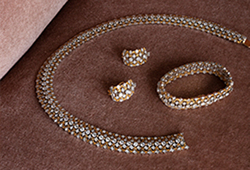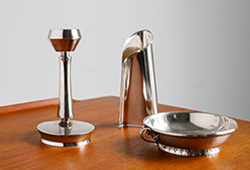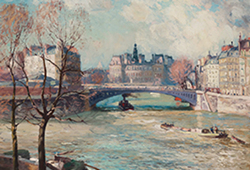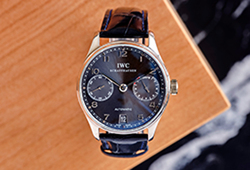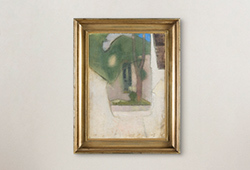Dora Jung
A TAPESTRY.
The Shell, series I-IV. Linen damask, 1957. 115x110 cm.
Literature
Reference: Fernström, Päivi (2012). Damastin traditio ja innovaatio. Tekstiilitaiteilija Dora Jungin toiminta ja damastien erityisyys. [The tradition and innovation of damask. The work of textile artist Dora Jung with a focus on her damask textiles.] helda.helsinki.fi/handle/10138/37509
More information
Dora Jung: SHELL series, 1957
Päivi Fernström
Dora Jung (1906–1980) is renowned as a textile artist who transformed every challenge that she undertook. Her work was based on damask weaving, which she developed comprehensively over a career spanning half a century. Dora Jung won many awards and accolades, including the Swedish Prince Eugen Medal in 1955, the Danish Cotil Prize in 1963, the Finnish State Design Prize in 1970 and the Nordic Design Prize in 1972. She was also awarded the title of Honorary Royal Designer for Industry at a 1979 ceremony in London and the Grand Prix at the Milan Triennial Exhibition of Decorative Arts and Modern Architecture in 1951, 1954 and 1957.
Although the works of Dora Jung graced several solo and joint exhibitions abroad, they were less frequently displayed in her native Finland. Her first major solo exhibition in Finland was at Gallerie Artek in 1957. This was also the year in which the Shell wall damask series was completed, and it was displayed for the first time at this exhibition. Dora Jung was keen to show how a single pattern can be varied by the choice of weaving technique, thereby conveying diverse visual impressions. All of the various sections in the series are based on exactly the same sketch.
The first weave in the series is a “normal” damask with a simple warp and weft-faced texture. The warp-faced seashell surface is woven more coarsely in the second weave, while a coloured area is threaded with additional weft into the middle of the seashells for the third. The fourth and final weave is entirely threaded with additional weft to completely conceal the satin face of the warp. Threading additional weft into an already laboriously completed damask surface was an even more time-consuming approach to weaving the damask, and this naturally also affected the price of the weave. It is understood that Dora Jung was inspired to use the Shell series as an example because some people had expressed surprise at the varying prices of similar patterned textiles.
The Shell series is one of the great milestones in the development of Jung’s damask weaving art, with the four woven variations displaying her various methods of realising patterns and textures in the damask. The seashell subject remained a favourite, and various smaller versions of it were woven at her studio in the 1950s and 60s.





